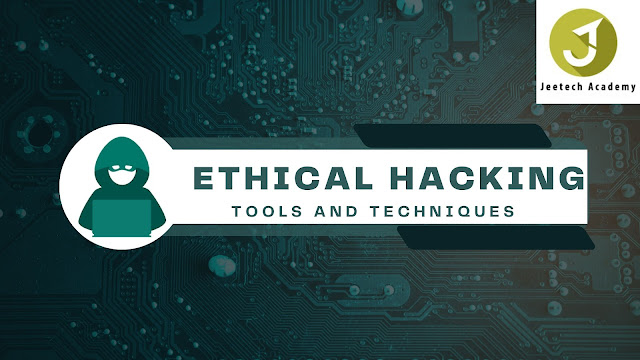Ethical Hacking Tutorial – A Beginner's Guide
Ethical Hacking Tutorial – A Beginner's Guide
Introduction
In today's digital world, cybersecurity has become a crucial concern for individuals and organizations alike. Ethical hacking, also known as penetration testing or white-hat hacking, is a proactive approach to securing computer systems and networks. This beginner's guide will provide you with a comprehensive overview of ethical hacking, its importance, and the fundamental principles and techniques involved.
What is Ethical Hacking?
Ethical hacking refers to the practice of identifying vulnerabilities and weaknesses in computer systems and networks with the owner's consent. Unlike malicious hackers, ethical hackers use their skills and knowledge for constructive purposes, helping organizations enhance their security measures. Ethical hackers work within the boundaries of the law and adhere to ethical guidelines.
Why is Ethical Hacking Important?
In today's interconnected world, cyber threats are constantly evolving, and no system is entirely secure. Ethical hacking plays a crucial role in identifying and addressing vulnerabilities before they can be exploited by malicious actors. By conducting ethical hacking assessments, organizations can strengthen their defenses, protect sensitive data, and prevent potential security breaches.
Steps Involved in Ethical Hacking
Ethical hacking typically follows a systematic approach, consisting of several key steps:
1. Information Gathering
The first step in ethical hacking is gathering information about the target system or network. This involves collecting data such as IP addresses, domain names, and network infrastructure details. Various open-source intelligence (OSINT) techniques are used, including searching public databases, social media profiling, and network scanning.
2. Scanning and Enumeration
Once the initial information is gathered, the ethical hacker proceeds to scan the target system or network for open ports, services, and vulnerabilities. This phase helps identify potential entry points for exploitation. Enumeration involves actively probing the system to gather more specific information about its configuration, user accounts, and network shares.
3. Vulnerability Assessment
During the vulnerability assessment phase, the ethical hacker systematically analyzes the target system for known vulnerabilities. This is done using specialized tools and techniques, such as vulnerability scanners and manual code reviews. The goal is to identify weaknesses that can be exploited to gain unauthorized access.
4. Exploitation
In the exploitation phase, the ethical hacker attempts to exploit the identified vulnerabilities. This involves using various techniques, such as executing remote code, privilege escalation, or gaining unauthorized access to sensitive data. The purpose is to demonstrate the potential impact of the vulnerabilities and provide recommendations for remediation.
5. Post-Exploitation
After successfully gaining access, the ethical hacker explores the compromised system further. This involves maintaining access, escalating privileges, and exploring the extent of control over the system. The objective is to identify additional vulnerabilities and assess the potential damage that an attacker could cause.
6. Covering Tracks
In the final step, the ethical hacker covers their tracks by removing any traces of their activities from the compromised system. This ensures that the system owner remains unaware of the intrusion and allows them to focus on strengthening their security measures.
Tools Used in Ethical Hacking
Ethical hackers utilize a wide range of tools and software to perform their tasks effectively. These tools include:
Nmap: A powerful network scanning tool used for port scanning and detection of open services.
Metasploit: An exploitation framework that helps in testing and validating vulnerabilities.
Wireshark: A network protocol analyzer used for capturing and analyzing network traffic.
Burp Suite: A web application testing tool for discovering and exploiting security vulnerabilities.
John the Ripper: A password cracking tool used to identify weak passwords and perform brute-force attacks.
Aircrack-ng: A suite of wireless network auditing tools used for capturing and analyzing Wi-Fi network packets.
Ethical Hacking Certifications
Several certifications validate the skills and knowledge of ethical hackers.
These certifications demonstrate expertise in various areas of ethical hacking and can enhance career prospects. Some popular certifications include:
- Certified Ethical Hacker (CEH): Offered by the EC-Council, this certification covers comprehensive ethical hacking concepts, tools, and methodologies.
- Offensive Security Certified Professional (OSCP): Provided by Offensive Security, this certification focuses on practical hands-on penetration testing and exploitation techniques.
- Certified Information Systems Security Professional (CISSP): A globally recognized certification that encompasses various domains of information security, including ethical hacking.
Read More
Ethical hacking is a crucial component of a robust cybersecurity strategy. By identifying vulnerabilities and weaknesses, ethical hackers help organizations strengthen their defenses and protect sensitive data. The field of ethical hacking offers exciting career prospects for individuals with a passion for cybersecurity and a desire to make a positive impact in the digital world.
.jpg)


Comments
Post a Comment